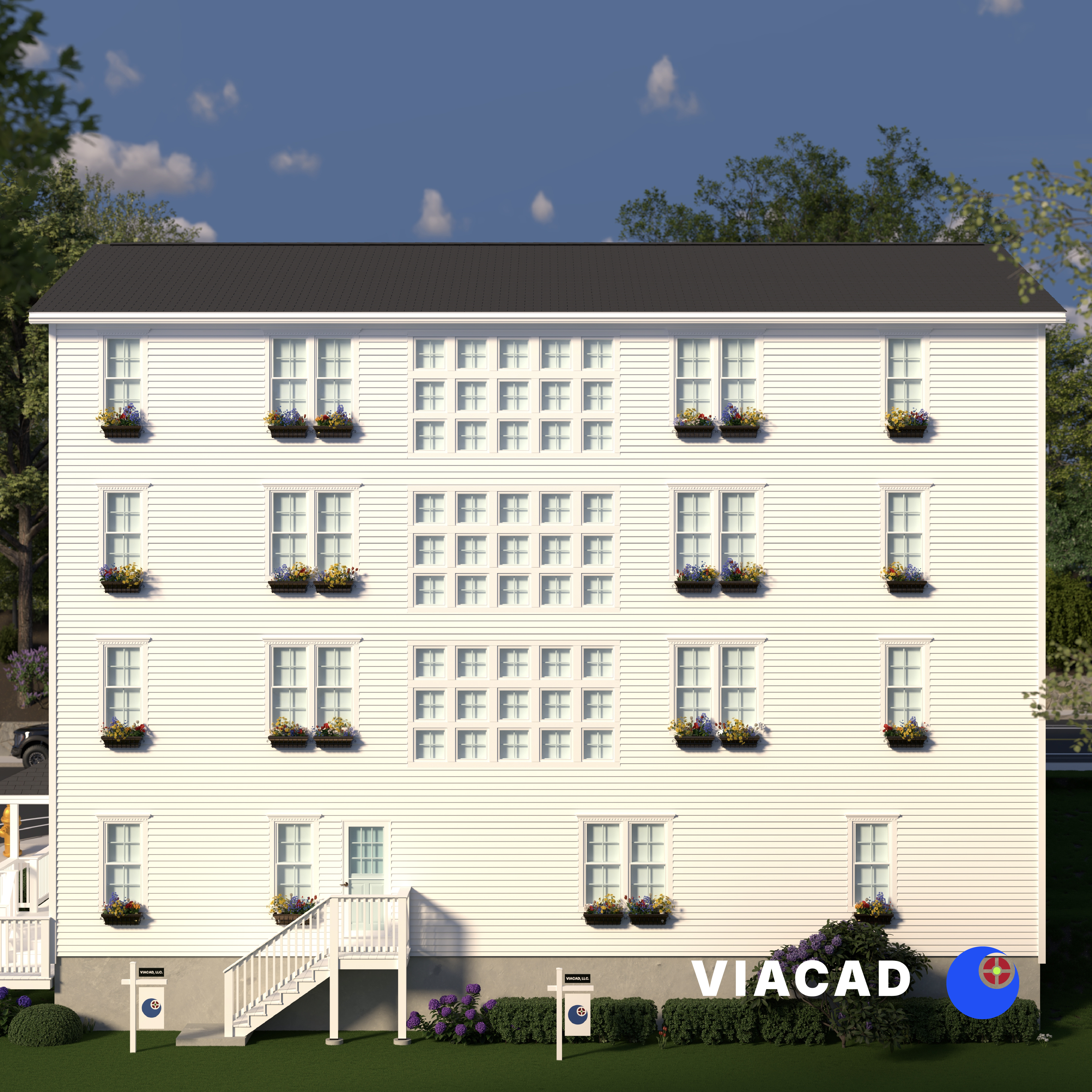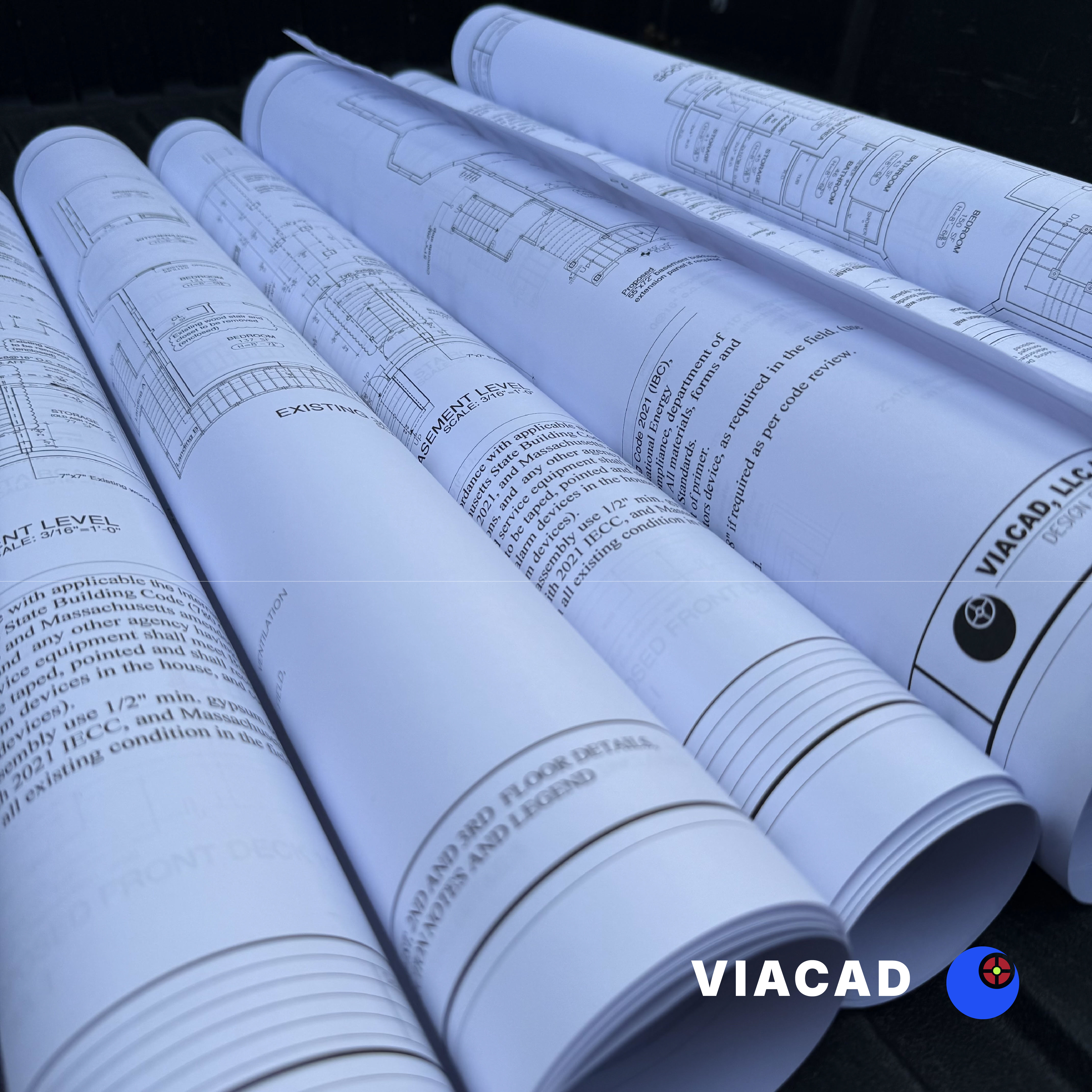
NOTE: VIACAD, LLC specializes in developing and producing detailed building plans (construction blueprints) for both residential and commercial projects across Massachusetts with more than 18 years of experience in design & construction producing professional permit-ready drawings for homeowners, builders, developers, and businesses.
Framing walls in a basement comes with unique challenges that require careful attention to moisture control, structural integrity, and compliance with local building codes. For Massachusetts homeowners and builders aiming to convert basements into functional living areas, understanding how to frame walls for a basement room is essential.
Following the essential steps in framing basement walls is critical to ensure a strong, safe, and code-compliant project.
This guide offers a clear, step-by-step approach to framing basement walls that supports a durable and code-compliant basement renovation.
NOTE: Information provided here is for educational purposes only.
Before beginning any framing work, it’s important to review Massachusetts building codes. These codes establish minimum standards to ensure safety, fire protection, insulation, and moisture management. Basement walls must meet these requirements to ensure a safe living environment and pass inspections.
Massachusetts basements typically have concrete floors and walls, which influence framing techniques. Pressure-treated lumber is required where wood contacts concrete to resist moisture and decay. Additionally, vapor barriers and moisture barriers are necessary to prevent water infiltration and mold growth.
Keep in mind that most basement projects will require building permits. This means you will very likely need professional construction drawings or building plans. Accurate plans not only help secure permits but also guide contractors and ensure the project meets code requirements. At VIACAD, LLC we specialize in producing these detailed, permit-ready plans tailored for Massachusetts conditions, helping homeowners and builders navigate local regulations efficiently.
Accurate planning is the foundation of successful basement wall framing. Begin by assessing the basement layout, noting the locations of existing utilities such as electrical panels, plumbing, support columns, and any existing structures like ductwork or other obstacles. These access points and structures influence wall placement and framing decisions.
Use a chalk line to mark wall locations on the concrete floor, ensuring walls are parallel and aligned with floor joists above for proper structural support. Uneven concrete floors and other uneven surfaces may require leveling or shimming before installing bottom plates.
Pressure-treated lumber must be used for bottom plates due to direct contact with the concrete floor. This protects the wood from moisture damage and extends the life of the framed wall.
Before installing new walls in the basement, take accurate measurements and plan carefully to ensure structural integrity and a functional finished space.

Selecting the right materials is critical for durability and code compliance. Choosing the appropriate material, such as pressure-treated lumber for bottom plates and dimensional lumber for studs and top plates, is essential to ensure durability and moisture resistance, especially in damp basement environments. Fire blocking materials are also required to enhance fire safety within wall cavities.
Tools typically include a power miter saw for precise cuts, a layout square to ensure right angles, chalk lines for marking, concrete screws and a powder-actuated nailer for securing bottom plates, and a level or plumb bob to verify vertical alignment.
When installing insulation and vapor barriers, be sure to manage moisture to prevent buildup and ensure energy efficiency and code compliance.
Managing moisture is critical in basement wall framing. A vapor barrier should be installed on the warm side of the wall, typically between the framing and interior drywall, to prevent moisture from migrating into wall cavities. This reduces the risk of mold and wood rot.
Proper insulation is essential for energy efficiency and comfort. Massachusetts energy codes require basement walls to be insulated to a minimum R-value, often R-19 or higher. Closed-cell spray foam or rigid foam board insulation are common choices because they also act as vapor barriers and help seal air leaks around electrical panels and plumbing.
Fire blocking is a mandatory safety feature in basement wall framing. Fire blocking materials installed between studs and around openings prevent flames from spreading quickly through wall cavities. Massachusetts building codes specify where fire blocking is required, so following these guidelines and adhering to safety precautions during the framing process is essential for safety and inspection approval.
Basement rooms intended for living or sleeping must have proper emergency egress. This typically means installing windows or doors that meet minimum sill height and opening size requirements to allow easy emergency escape in emergencies, ensuring compliance with safety regulations.
Successfully framing basement walls in Massachusetts requires more than carpentry skills. Good planning and accurate documentation are vital to ensure the project meets local codes, passes inspections, and results in a safe, comfortable living space.
Professional construction drawings detail all aspects of the framing process, including wall locations, stud placement, insulation, vapor barriers, and fire blocking. These plans serve as a clear guide for contractors and help homeowners obtain necessary permits.
At VIACAD, LLC, we have over 18 years of experience producing detailed, permit-ready construction blueprints for basement remodels, renovations, and additions throughout Worcester and Central Massachusetts. By securing building plans early, homeowners can solicit bids from multiple contractors, giving them control over their project and ensuring competitive pricing.
Framing walls for a basement room in Massachusetts involves navigating unique challenges related to moisture, structural support, and code compliance.

Contact us if you'd like to commission or collaborate with VIACAD, LLC.
Currently accepting projects in Massachusetts.